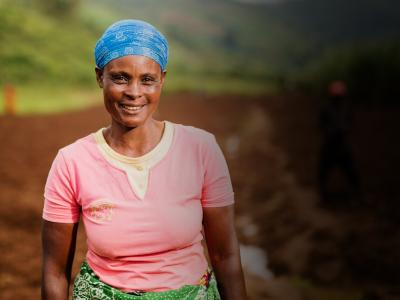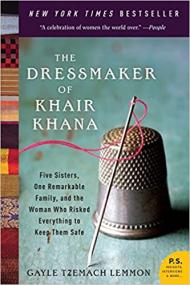Welcome to the Women for Women International Book Club! This month’s pick came as a suggestion on Instagram from @wondrous_soul_ : The Dressmaker of Khair Khana by Gayle Tzemach Lemmon.
Lemmon relays the experiences of Kamila Sidiqi as her rights, and those of women around her, eroded during the Taliban’s rule. Sidiqi’s journey from dressmaker to Deputy Chief of Staff of Admin and Finance for President Ashraf Ghani’s administration is a testament to her passion and hope for Afghanistan’s future. And with this month marking the 101st Afghan Independence Day, we celebrate the successes of women in Afghanistan and their continued quest for equality.
What is The Dressmaker of Khair Khana about?
The Dressmaker of Khair Khana: Five Sisters, One Remarkable Family, and the Woman Who Risked Everything to Keep Them Safe follows Kamila and her family as they weather the strict Taliban regime. Raised in a family of eleven children, Kamila’s father was insistent that both his sons and daughters would receive an education. As girls’ schools closed and women’s public lives disappeared, the Sidiqi family’s situation also became more precarious.
Dangerous political situations forced Kamila’s parents to flee and left their family with little income. But Kamila’s spirit and ingenuity found a solution: sewing. She and her sisters learned to sew garments that they could sell. She secured connections to markets to begin earning an income, navigating restrictions to avoid beatings or other punishments.
Eventually, Kamila’s enterprise expanded to teach tailoring to more women and grow their business. In doing so, her tailoring business did more than make dresses: It created opportunities to support women, connect them with another, find purpose, and grow their power.
Discussion Questions
Check out the discussion questions below and connect with readers on Instagram to share your reactions, thoughts and questions by using the hashtag #WFWIBookClub, and tagging us with @womenforwomen. We want to hear what you think—share with us your take on the book!
- Kamila studied to become a teacher and even earned a prestigious teaching certificate. Before she could complete her training, the Taliban took over Kabul and banned women from nearly all public places, including schools. How did Kamila adapt the skills she learned as a teacher and put them to use starting her dressmaking business, and later in her U.N. work?
- At many crucial junctures, Kamila turns to her faith for guidance. What role does faith play in her personal journey?
- Under the Taliban, Afghan women were confined to their homes and saw their lives transformed virtually overnight. Many women like Kamila still needed to support their families, though, and so found creative ways to work within and around these new restrictions. What would you have done under similar circumstances? Would you have dared to go against the Taliban's rules at the risk of your own safety?
- Malekheh plays an instrumental role in teaching Kamila how to sew and in getting her dressmaking business off the ground. Kamila often seeks out the advice of her eldest sister, even though she doesn't always take it. How would you characterize the relationship between these two sisters? What role do you think this relationship played in Kamila's business success?
- Lemmon paints a colorful, yet nuanced portrait of modern day Afghanistan. The story of Kamila and her family presents an alternative to the conventional image of women as victims of war. Did Lemmon's portrayal change the way you think about Afghanistan? Or about women and war?
- Within a year, Kamila was able to transform a living room operation into a thriving dressmaking business—selling finely embroidered dresses to tailors throughout Kabul and providing meaningful work for an entire community of women. What do you think about Kamila's business practices? Why do you think she and her sisters were so successful? What lessons about entrepreneurship can be taken from their story?
- In chapter 7, Kamila and her sisters work around the clock to make six dresses for a wedding party, only to discover that the bride is marrying a Talib. How does this episode impact or cause you to revisit your view of the Taliban? If Taliban soldiers knew about the Sidiqi sisters' tailoring business, why didn't they shut it down? What did you think when you saw that there were Taliban who sent their daughters to work with Kamila?
- How does Lemmon portray men throughout the book? Think of Rahim, Mr. Sidiqi, Ali and his brothers, and the Talibs Kamila encounters. Do these characters reshape or reinforce your impressions of men in Afghanistan?
- Despite being faced with the daily perils of war and economic hardships, the Sidiqi family never completely abandoned their home in Khair Khana. What does that say about their commitment to their community? To their country?
- How does Kamila's story affect the way you see the future of Afghanistan and America's presence in this war-scarred country?
The discussion questions above are printed in the 2012 edition of The Dressmaker of Khair Khana published by Harper Collins.

